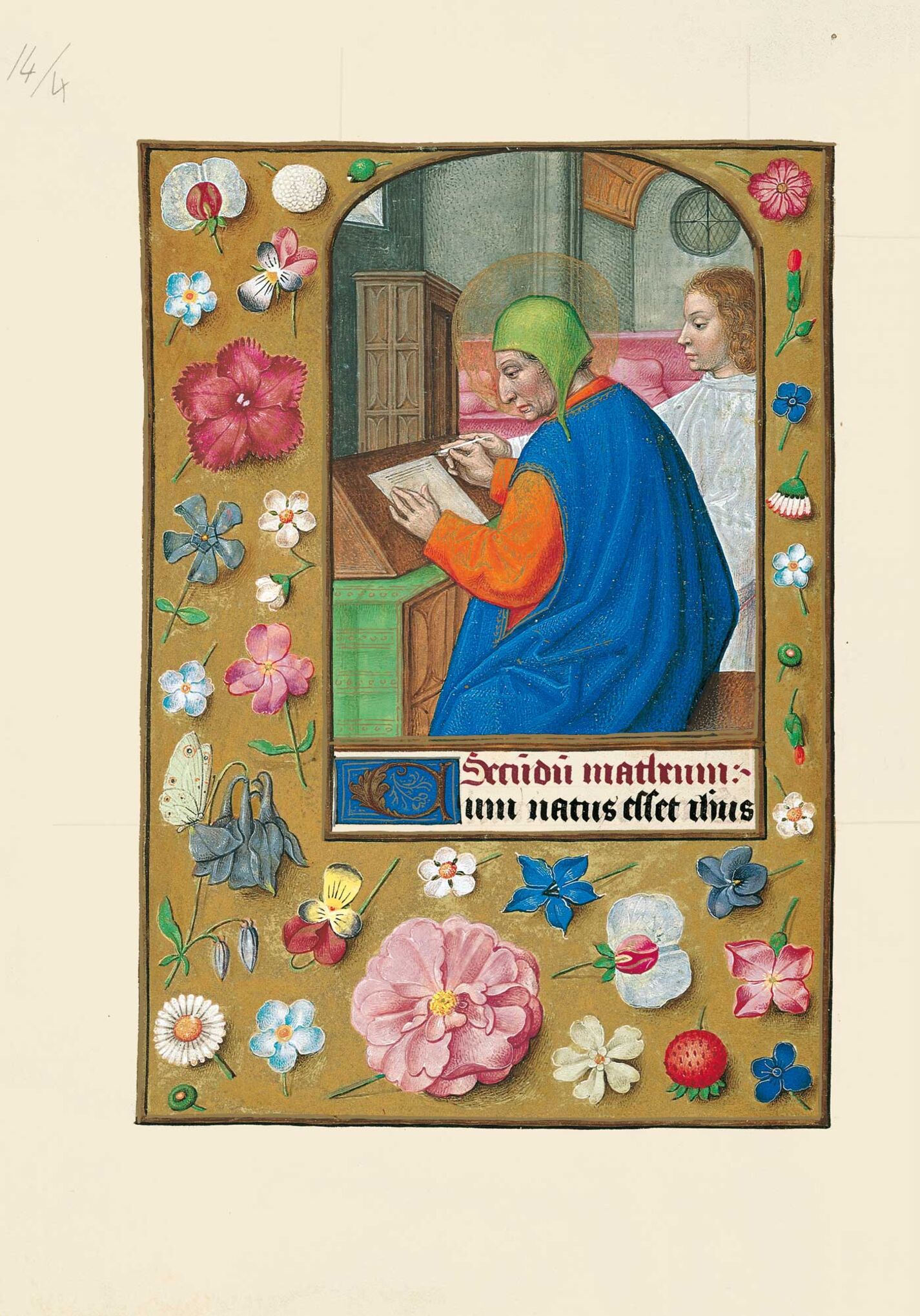The evangelist, framed by a flower-strewn border, is portrayed in a bourgeois, indoor setting, where a cupboard and straight, upholstered bench with cushions can be seen. St Matthew, wearing a cap, a loose-fitting robe and coat, writes a page of his Gospel with a plume upon a desk, whilst his usual symbol, a man (angelic in appearance, i.e. androgynous and garbed in white), places his hand upon the evangelist’s right hand to inspire his writing. The composition is virtually the same as in the Hours of James IV of Scotland and the Mayer van den Bergh Breviary (f. 549r) and very similar to the one in the Spinola Hours (f. 87v) and St Mark in the Rothschild Hours (f. 83r). The classical origin of this iconographic theme can be seen not only in the portrait of the author writing his work but also in the close relationship
between the androgynous, human figure and the evangelist: its source is to be found in representations of classical times of poets or philosophers inspired by a muse, as in the portrait of St Mark in the Codex Purpureus Rossanensis (Rossano, Il Duomo di Rossano, f. 121r) painted in the 6th century. In both this manuscript and in the Hours of Joanna of Castile, the figuration of the muse has been christianised.
